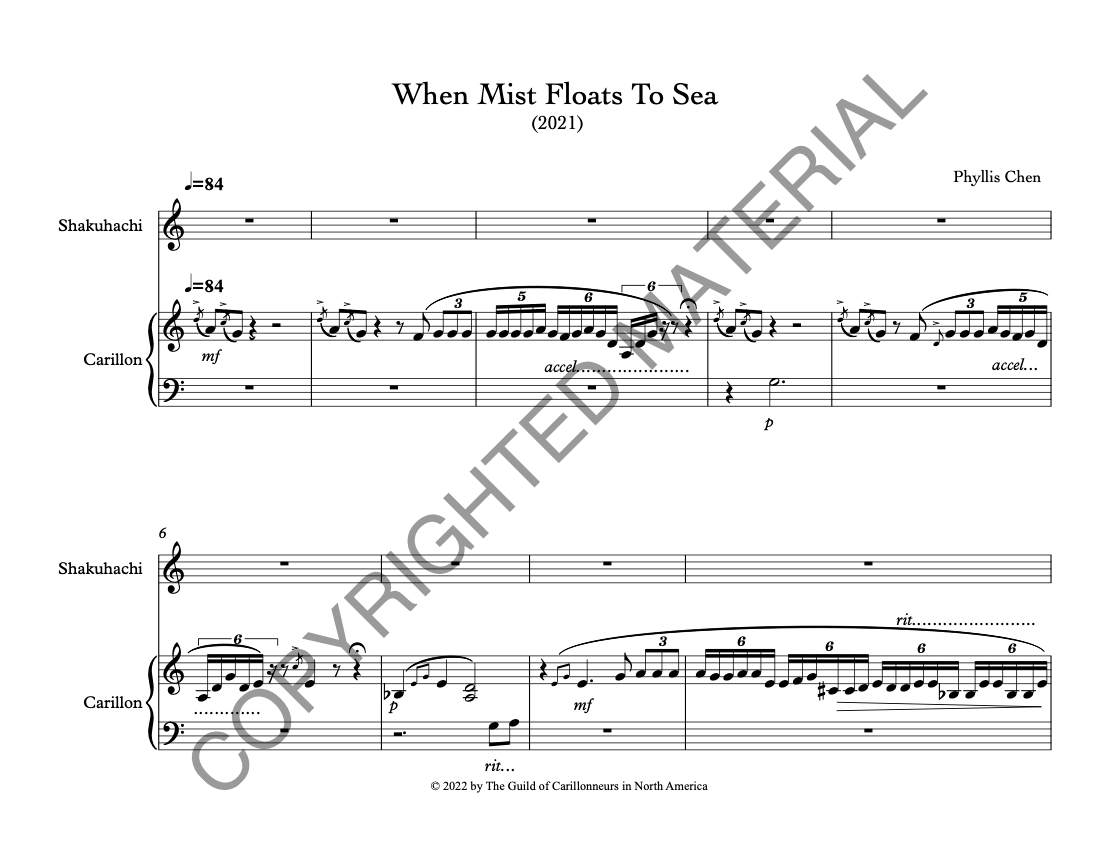
When Mist Floats to Sea
Commissioned by the Johan Franco Composition Fund of The Guild of Carillonneurs in North America
Performance notes
The general pacing and tempo is free and flexible.
Length of phrases in the shakuhachi part is determined by breath length of performer.
Timing is quite free in non-measured segments but performers should follow one another to determine when to enter.
Additional downloads include:
- MP3 recording for reference
- Sibelius file for transposing carillons
Program notes
When Mist Floats To Sea is written for shakuhachi flute and carillon. The work was commissioned by the Franco Committee of the Guild of Carillonneurs in North America. Special thanks to Alex Johnson, Joey Brink, Tiffany Ng and Ralph Samuelson.
The shakuhachi (Japanese zen flute) was historically used as a form of meditation by Zen Buddhists from the Fuke sect. The instrument's traditional works were created by monks as a form of breath meditation. The relationship between bells and shakuhachi stems from an ancient legend. It is said that esteemed Buddhist priest Chang Po wandered the streets ringing a bell and chanting. A young novice monk, Haku, heard the bell and attained enlightenment, immediately running home to make a shakuhachi flute and playing it. He is said to have made the sound of the bell on the flute, creating one of the first works in this tradition "Kyotaku," which translates to mean "empty bell."
—Phyllis Chen

![[PDF] When Mist Floats to Sea [PDF] When Mist Floats to Sea](https://d2j6dbq0eux0bg.cloudfront.net/images/9481258/4372692965.png)